Competitive shooting can seem daunting to start, particularly when you consider the expense involved. Is it possible to save a lot of money without losing that competitive edge?
In this legendary showdown, we’re comparing the outstanding Walther PDP Match SF with a relatively new challenger, the Canik SFX Rival S.
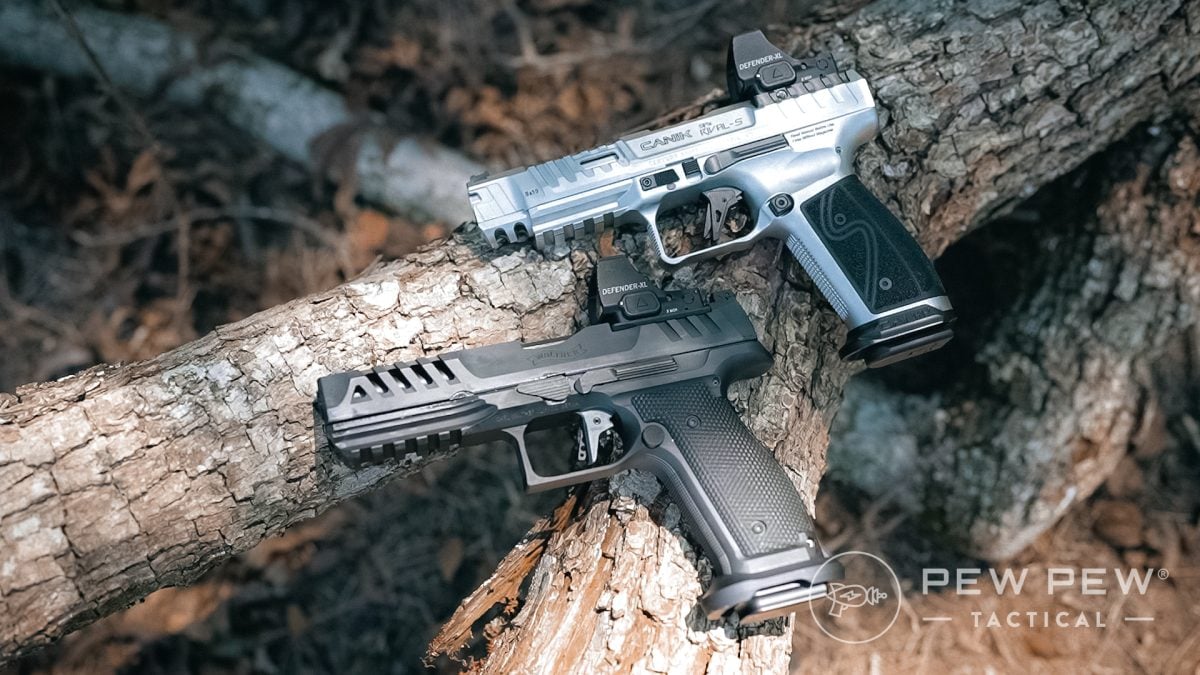
The goal here is not to see which is the better gun, but to learn if the Canik can be competitive with a pistol that costs $1,000 more.
We designed a course of fire and teamed up some experts to find the answer. We’ll share our findings with you below, so read on!
Table of Contents
Loading…
Prices accurate at time of writing
Prices accurate at time of writing
-
25% off all OAKLEY products - OAKLEY25
Copied! Visit Merchant
Prices accurate at time of writing
Prices accurate at time of writing
-
25% off all OAKLEY products - OAKLEY25
Copied! Visit Merchant
Walther PDP Match SF & Canik SFX Rival S Comparison Table
| Walther PDP Match SF | Canik SFX Rival S | |
| Caliber | 9mm | 9mm |
| Action | Semi-auto | Semi-auto |
| Capacity | 20+1 | 18+1 |
| Overall Length | 8.37″ | 8.09″ |
| Barrel Length | 5″ | 5″ |
| Height | 5.75″ | 5.75″ |
| Width | 1.4″ | 1.41″ |
| Weight | 41 oz. | 42.72 |
| Country of Origin | Germany/USA | Turkey |
| Comes with | Plastic case, three magazines, gun lock, owner’s manual | Water Resistant Tier 2 Travel Case, (2) 18 Round Magazines, (2) Aluminum Magazine Base Plates, Magazine Loader, External Mag-Well, Custom Holster, Canik Punch & Tool Kit, Cleaning Kit, (5) Optic Plates with the Dark Side (4) with the Chrome version, Additional Fiber Optic, (3) Grip Back Straps, (3) Magazine Release Extensions, Gun Lock & Manual |
Shooting the Walther PDP Match SF & Canik SFX Rival S
Relying heavily on Preston’s competitive shooting experience, we set up courses of fire to be shot with each gun. We used a Shooter’s Global timer to keep track of the seconds and divided this by hits to establish hit factors.
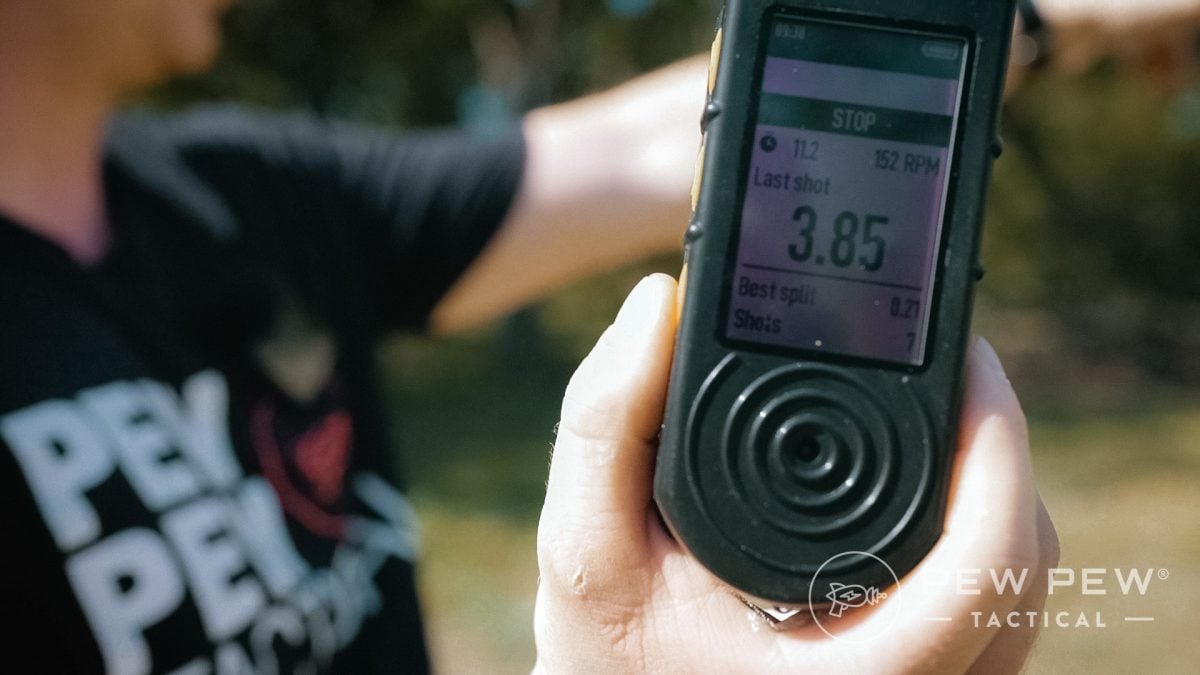
Both shooters shot both guns on all three courses of fire. In addition, we alternated which guns we started with so there wasn’t a “warmed up” bonus.
The first course of fire was an Accelerator Drill designed to present a close target at 5 yards, a slightly further target at 10 yards, and end with a far target at 15. The first two were IDPA-style cardboard silhouettes, and the last target was a small steel plate.
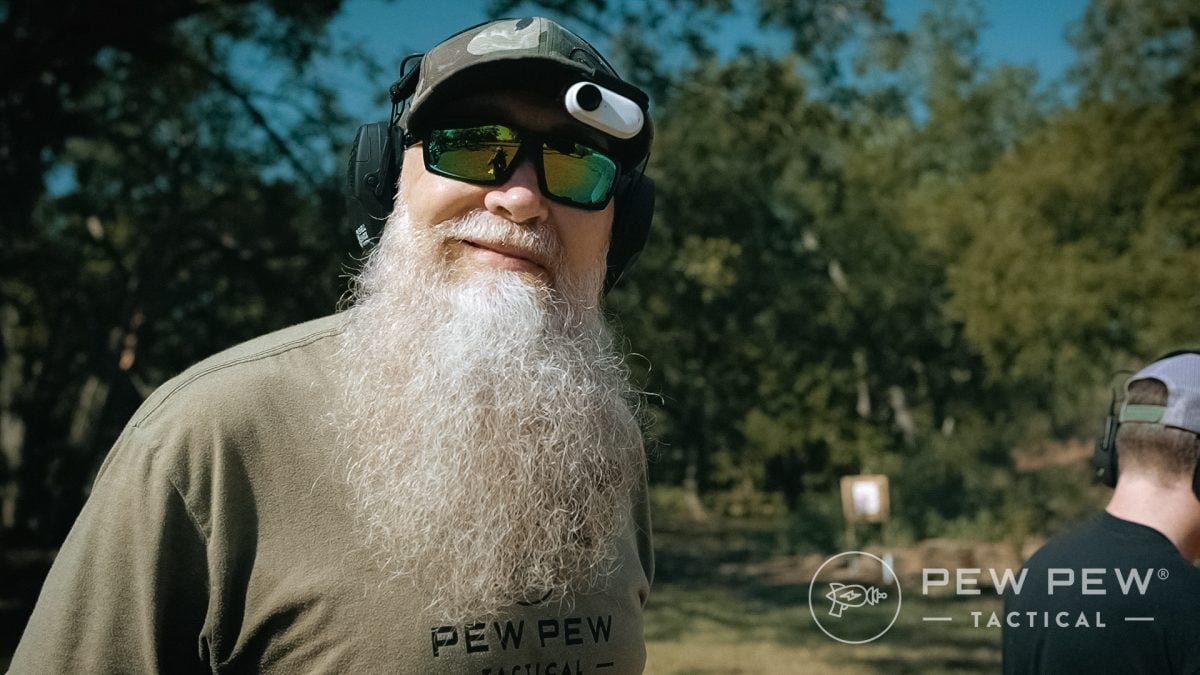
The idea is to see how quickly a shooter can progress through increasingly difficult targets due to distance alone or distance and size. The first target is pretty easy, but if you keep the same speed, you’re liable to miss.
My score on the Accelerator Drill with the PDP was a hit factor of 4.9, but I shot the same course with the Rival at 4.8. Notably, this was my first drill with the gu,n and I put one in the dirt on my first shot because the trigger is so light.

Preston shot a 7.27 hit factor with the PDP, and an 8.7 with the Rival. We then set up the Hostage Drill.
This was a series of four IDPA targets in a row at the same distance, though the two in the middle had hostages, or “no hit” targets stapled in front. Each target got two hits, and then the shooter conducted a mag exchange in the middle, before shooting all four targets again.
The drill is designed to test speed and accuracy, as well as some manipulation via the mag exchange. The first and last targets are pretty easy at a distance of 10 yards, but you need to be more careful with the hostage targets.

I shot a 3.41 hit factor with the PDP and a 3.79 with the Rival. Preston shot a 5.32 hit factor with the PDP and a 5.71 with the Rival.
In my first run, I grazed a hostage target, so I intentionally repeated the error in the second run to keep the comparison fair. Notably, Preston and I both performed better with the Rival.
The last drill was somewhat a form of torture because it was shot left-handed. We fired at a single target from 10 yards with three different grips, firing three shots with each grip.

First, we began with both hands before transitioning to strong hand only. We finished the drill by switching to support hand only.
With the PDP, I scored a 3.36 hit factor and a 3.97 with the Rival. Preston scored a 3.96 hit factor with the PDP and a 3.24 with the Rival.
Preston averaged the total scores to provide more data on performance. I had a 3.89 hit factor with the PDP and a 4.2 with the Rival — roughly 8% better.
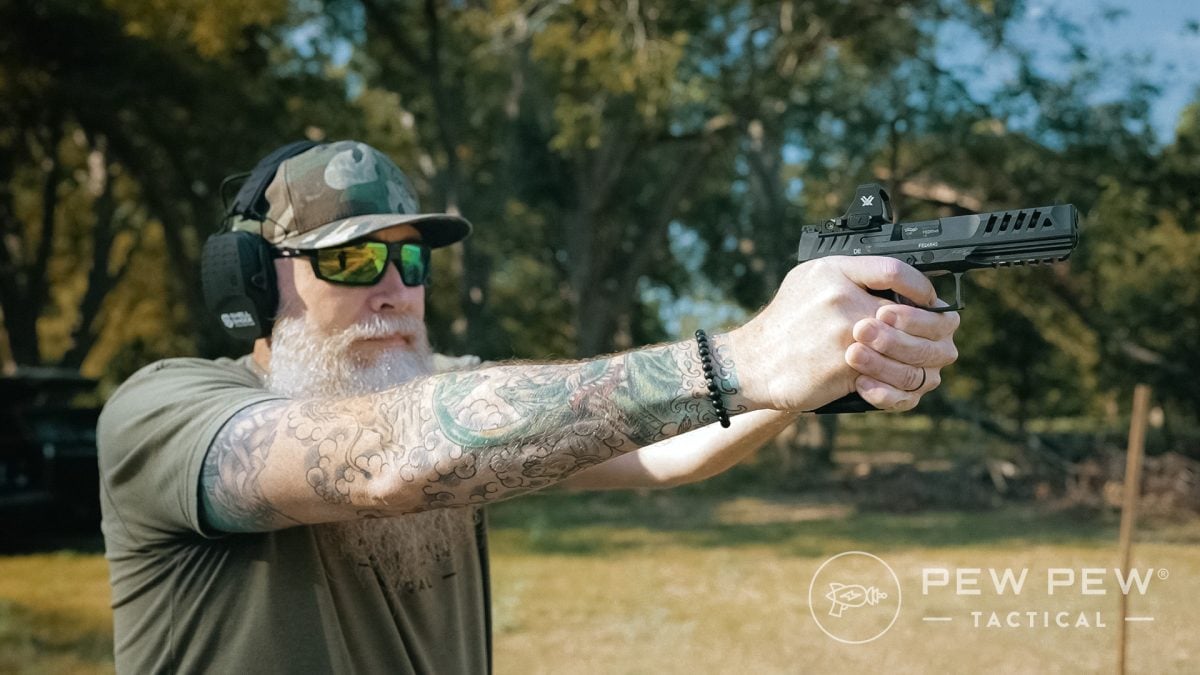
Meanwhile, Preston shot a 5.51 hit factor with the PDP and a 5.88 with the Rival — 7% better.
In the end, we both performed better with the Canik Rival SFX S.
What do you think of the Canik Rival SFX S? Rate it below!
Accuracy
Using a Ransom Rest, Preston shot two 10-shot groups from each gun, from a distance of 7 yards.
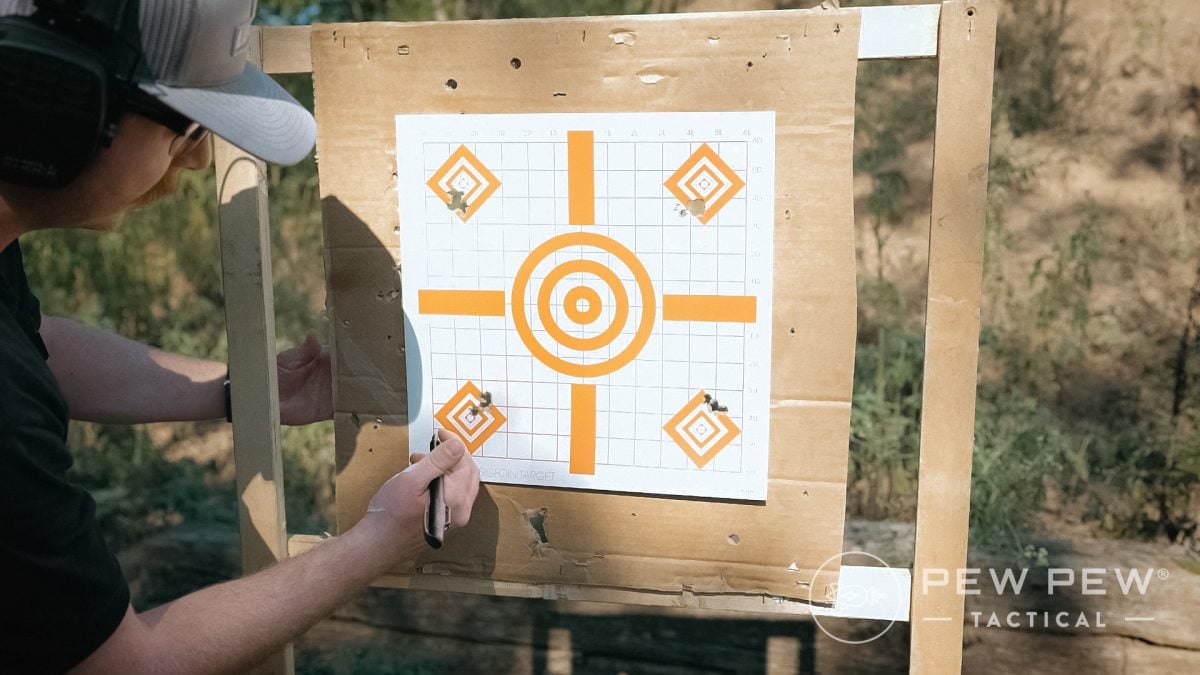
One group was shot with AAC 115gr FMJ and the other with Nosler 124gr ASP JHP. All four groups were impressive, hovering around 1 inch.
In fact, the groups were so close that they were indistinguishable when selecting the winner. As a result, this category ended in a draw.
Reliability
From the outset, we had reasonable indications that the PDP and Rival would be reliable. So imagine our surprise when both malfunctioned…
While running drills, I experienced a double feed with the Walther PDP.
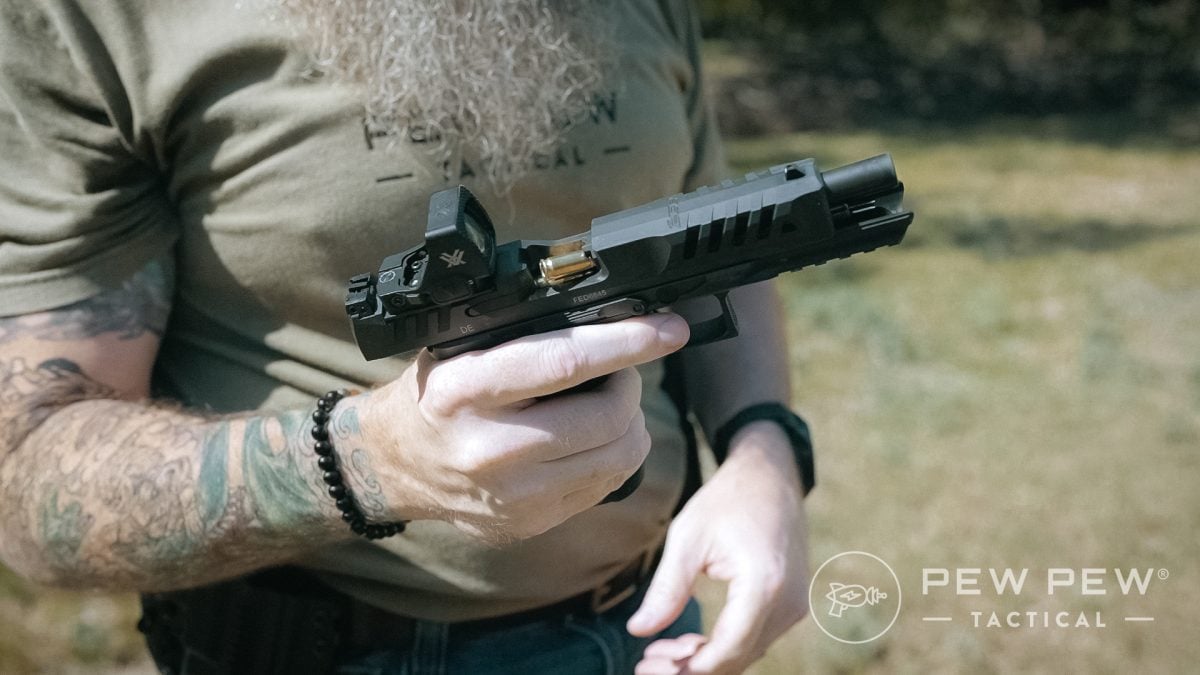
As I manipulated the firearm to solve the issue, I noted it was dry. After inspecting, I confirmed it was dry and applied some lubrication. We had zero issues with the firearm afterward, so the malfunction falls into the operator-induced category.
Preston had one failure to feed with the Canik Rival but realized he hadn’t fully seated the magazine during a drill, classifying this malfunction as operator-induced.
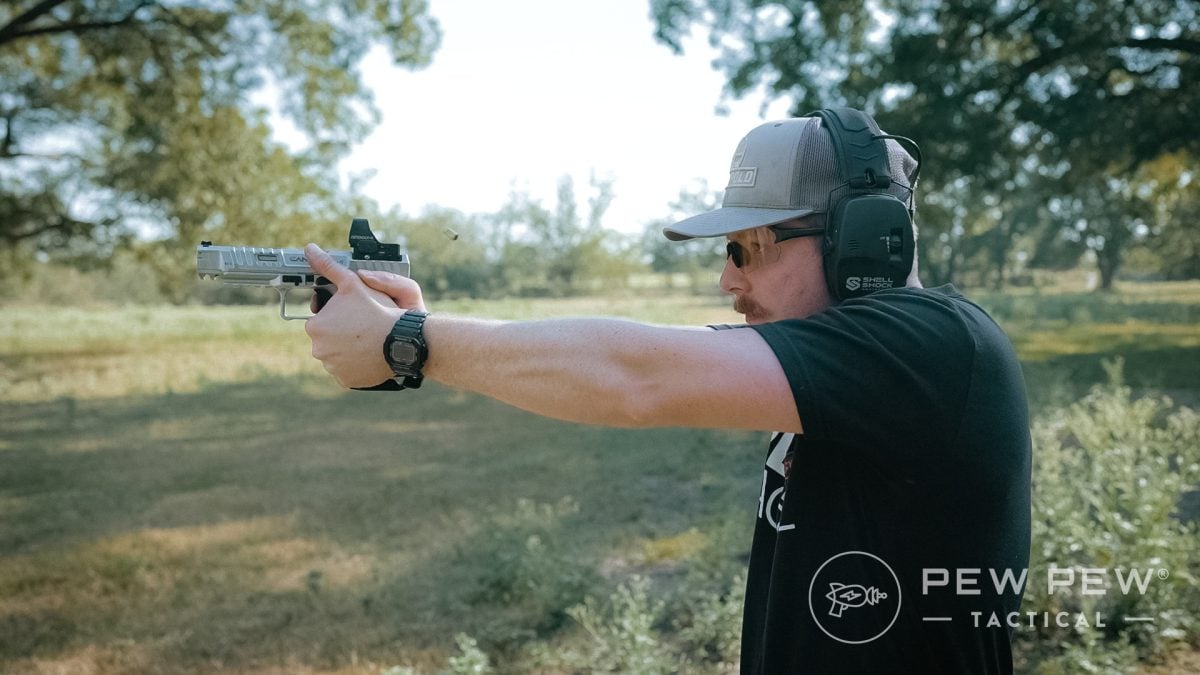
Preston has previously reviewed the polymer Canik SFX Rival and rated it a perfect 5/5 for reliability.
Meanwhile, I reviewed the Walther PDP Match previously and found it reliable during my initial testing. Fellow PPT editor Scott Murdock tested the steel and polymer versions of the PDP Match and scored their reliability a perfect 5/5.
Between our collective experiences reviewing and testing both guns, and through honest assessment of our issues, we believe both guns to be very reliable.
As a result, this category is a tie between the Canik Raval SFX S and Walther PDP Match SF.
Ergonomics: Fit & Feel
When Walther released the PDP in 2021, the company set out to highlight ergonomics. You can feel the PDP fill your hand when you pick one up.
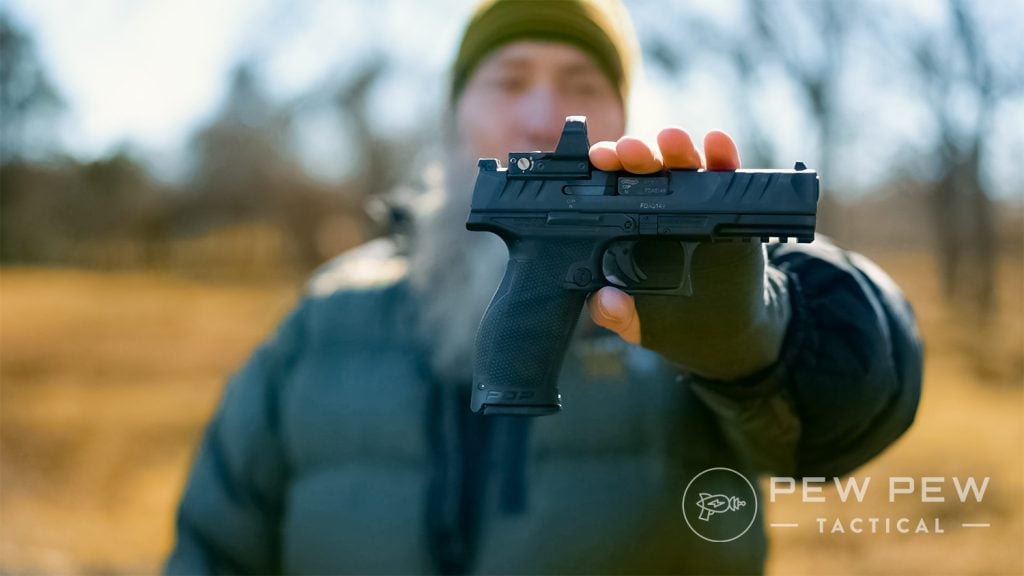
The PDP Match SF continues this fine tradition while adding more weight due to the all-steel construction. Curves abound, and the only truly flat surface is the front strap.
In addition, the controls are large and easy to reach. An extended beavertail covers the web of the hand while providing additional stability for recoil.

The Rival’s ergonomics are very good. Its wrap-around grip texture feels akin to sandpaper. The grip itself has a nice curve on the backstrap but is largely flat on the sides.
Controls are also well placed and easy to reach. The magazine release sticks out further and is easier to activate than the PDP, but the beavertail is somewhat smaller.
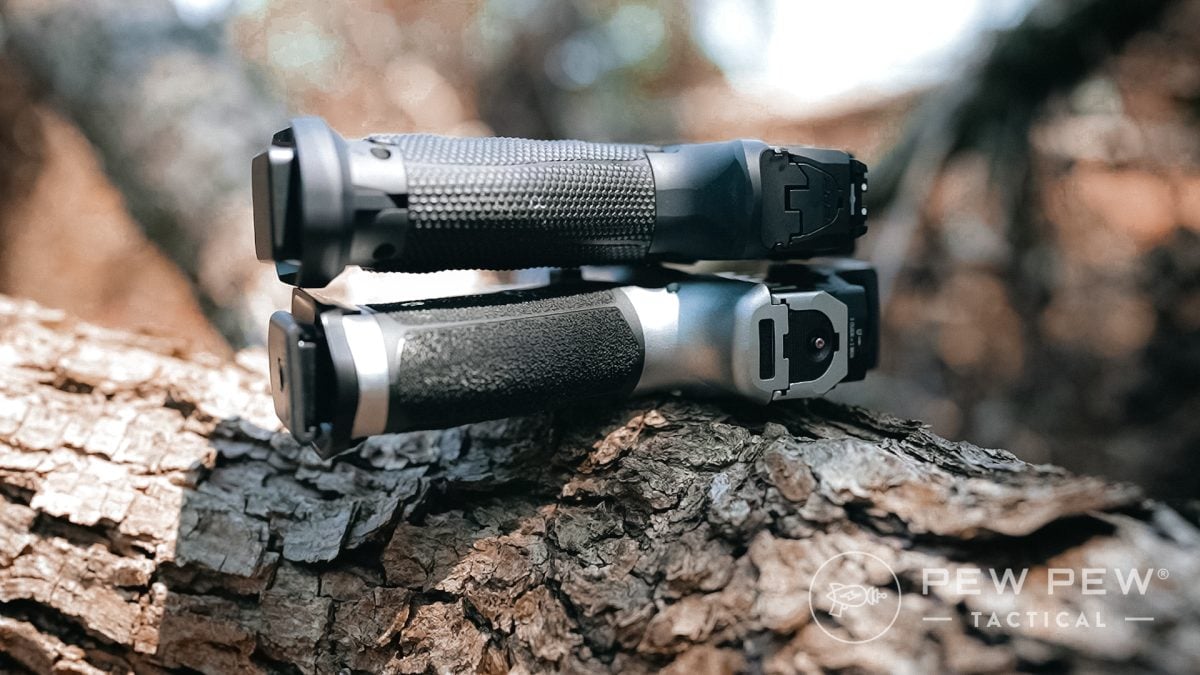
Ergonomics on both guns are excellent, but the PDP is better and takes this category.
Trigger
We dedicated a category to triggers because, in many respects, they are one of the most critical components of a competitive handgun.
Anyone who has been shooting for a while tends to develop personal preferences in how a trigger performs.
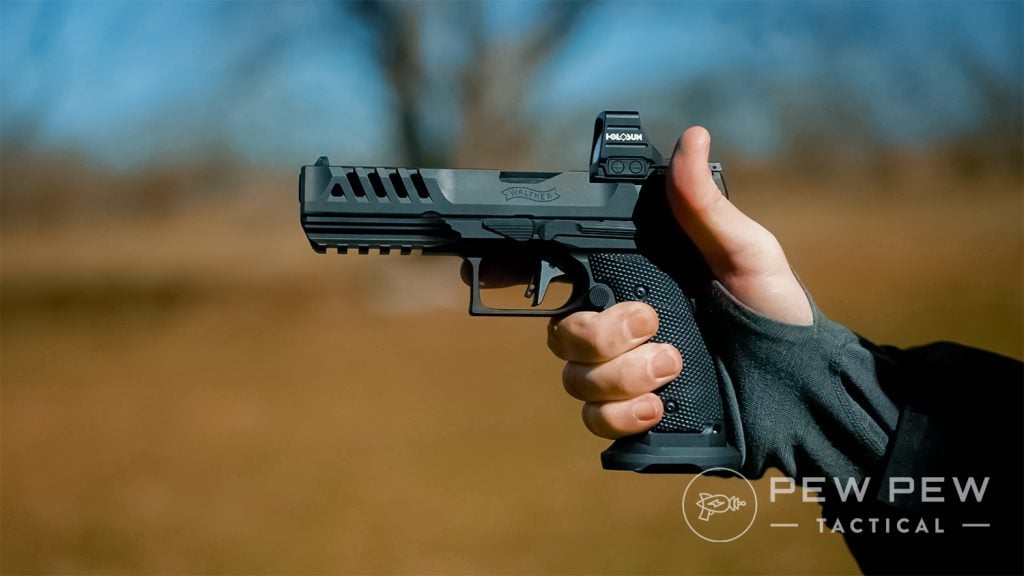
The PDP and the Rival have outstanding aluminum trigger shoes with flat surfaces. The PDP sports a narrow safety device similar to a Glock, while the Rival has a much wider one.
The PDP has a short take-up before hitting a defined wall, while the Rival’s is slightly longer. Both triggers break cleanly and have comparable, short trigger resets. For my tastes, the Rival’s trigger is on the light side, though they were pretty close.
Using a Lyman Digital gauge, I found the Rival averaged 2 lbs. 12.7 oz., while the PDP averaged 3 lbs. 1.2 oz.
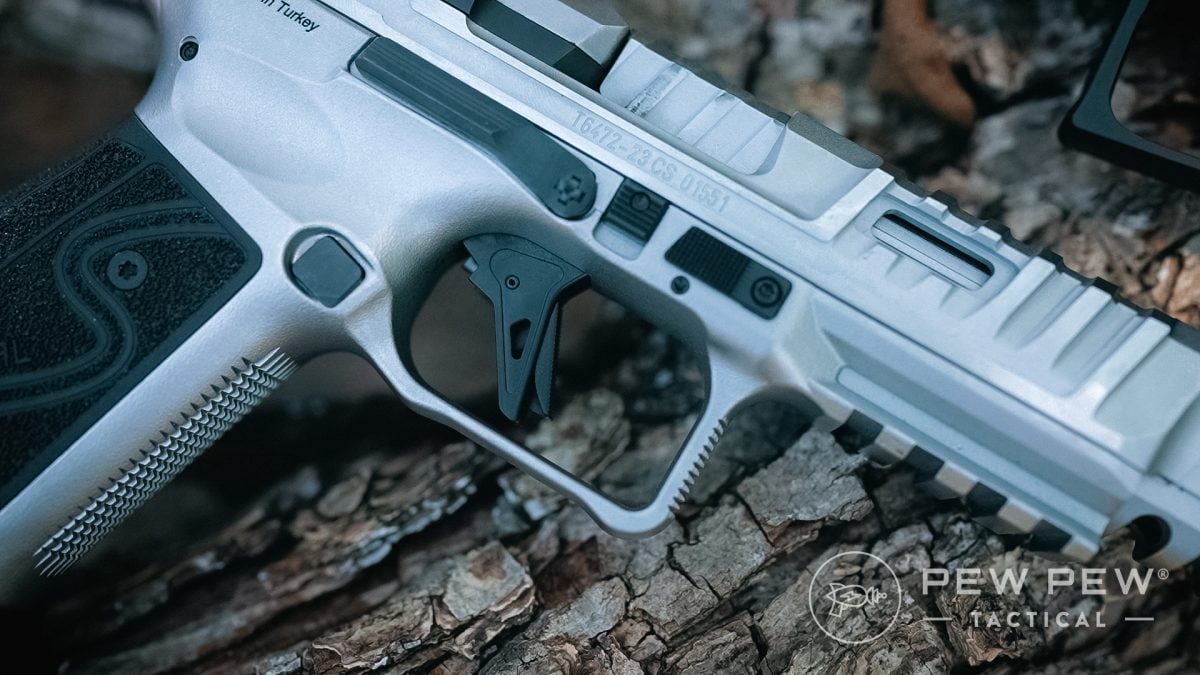
The difference is minimal, but when I first started shooting the Rival in a drill, I was prepping the trigger during presentation and actually fired a shot. With practice, you get used to it, so it comes down to preference.
The triggers were similar in characteristics and performance, so we called this category a draw.
What Sets the Canik & Walther Apart: Value
One of the things I’ve appreciated about Canik is the sheer value you get when you purchase a firearm.
I’m not aware of any other company that provides as much support in the way of accessories right out of the box.
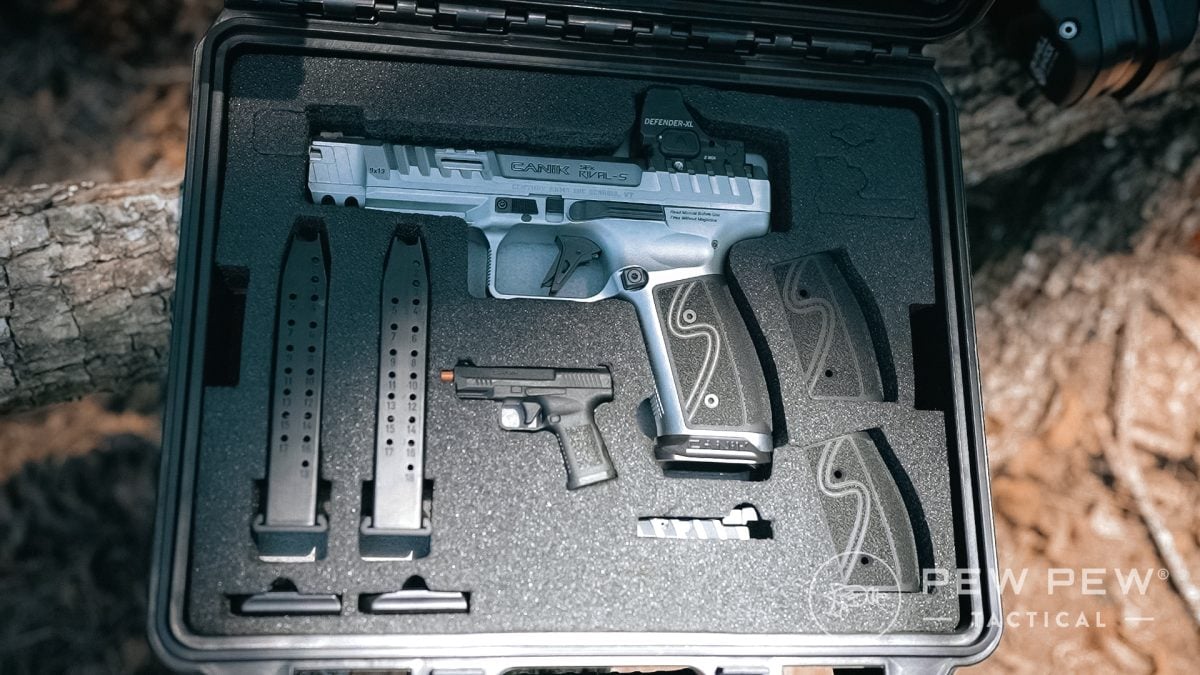
While the PDP Match SF is an impressive firearm, your rather expensive purchase entitles you to the gun and three magazines — that’s about it. You get one optic plate from Walther, but you have to send off for that.
Crack the box on the SFX Rival S, and you can be shooting in no time. Canik includes optic plates, magazines, a loader, a magwell, a cleaning kit, tools, and a holster.
That’s not everything, but it’s enough to get most people range-ready.
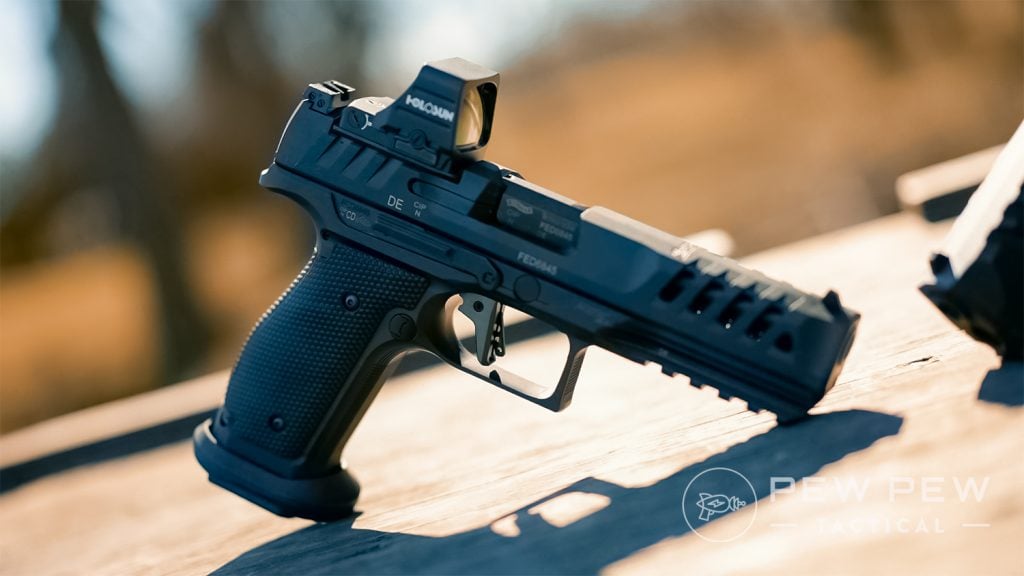
Finally, we come to the crux of the matter…price.
The PDP Match SF is priced around $1,800, while the SFX Rival S costs around $900.
It’s easy to see why the SFX Rival S takes this category when you weigh the performance, value with all the accessories, and price.
Prices accurate at time of writing
Prices accurate at time of writing
-
25% off all OAKLEY products - OAKLEY25
Copied! Visit Merchant
Prices accurate at time of writing
Prices accurate at time of writing
-
25% off all OAKLEY products - OAKLEY25
Copied! Visit Merchant
Meet the Experts
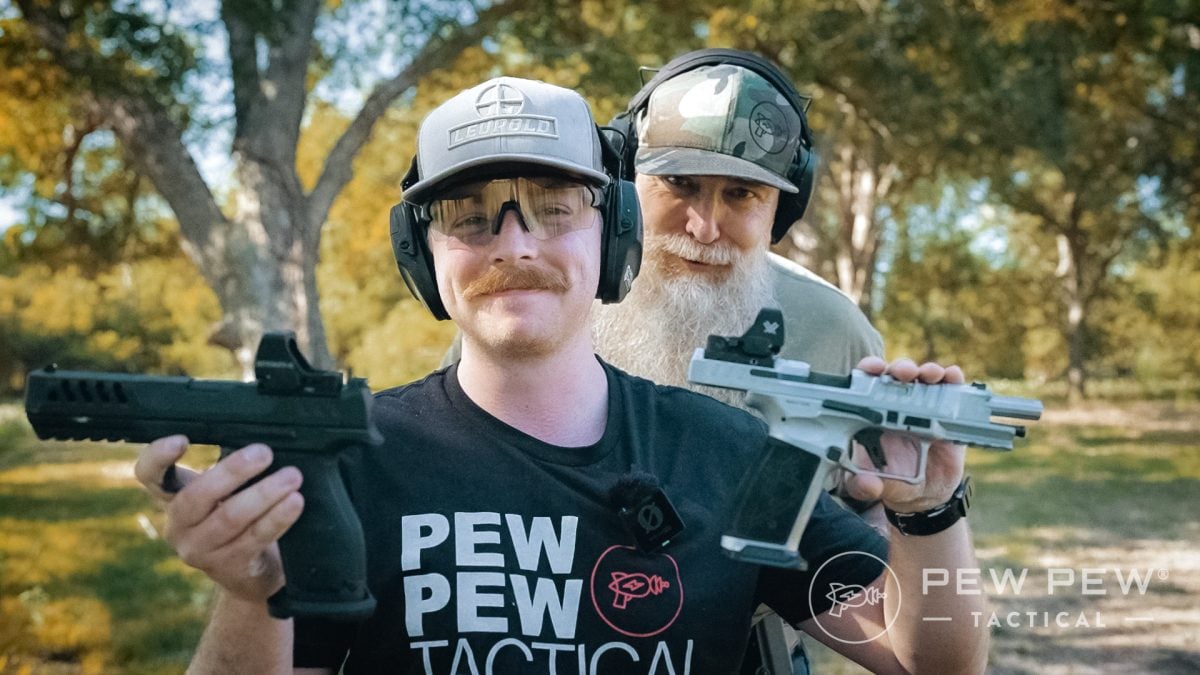
For this comparison, we used the expertise of our resident competitive shooter Preston.
Preston began to take shooting and training seriously after a near-deadly force encounter in 2016, where having his handgun saved his and another person’s life. Since then, Preston has jumped headfirst into the training and competition shooting world. He is passionate about bridging the gap between competitive and defensive firearms training with the goal of improving the skills of the average gun owner and concealed carrier.
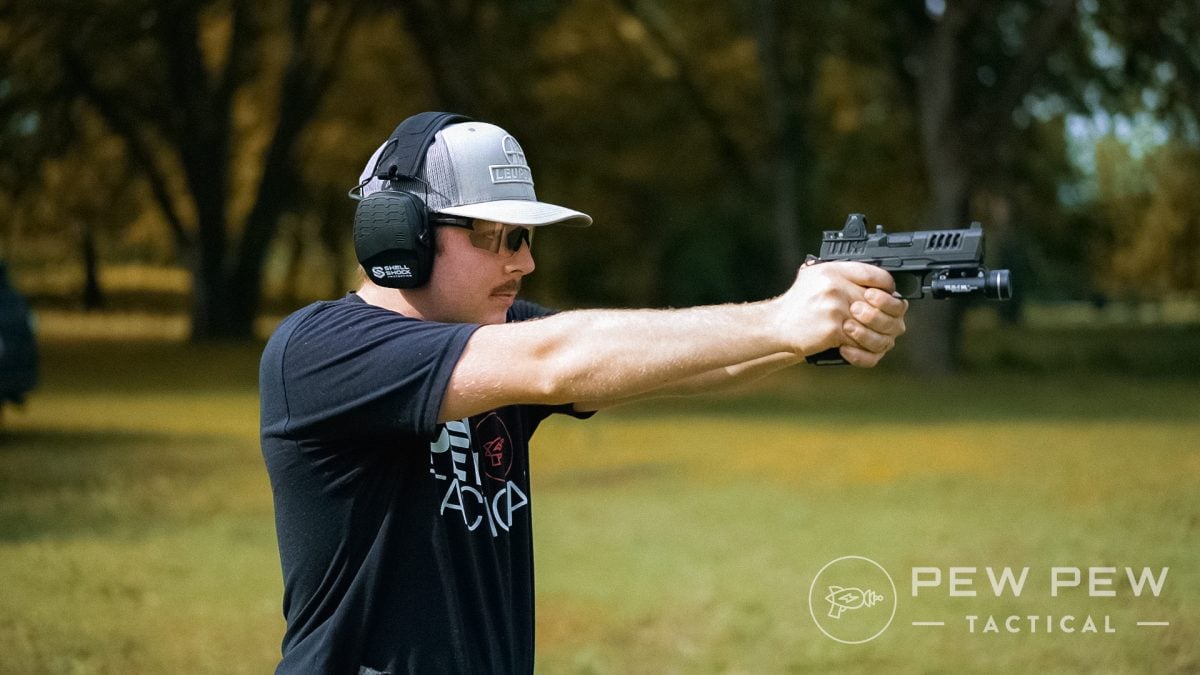
Preston was joined by Pew Pew Tactical Content Producer and resident video reviewer Sean Curtis. Sean doesn’t shoot competitively but has experience in tactical and instruction. He spent over two decades in law enforcement, becoming a POST-certified handgun instructor and NLEFIA Red Dot Instructor and receiving CLEFIA Advanced Firearms Instructor Training and AR-15 armorer training. He has since attended a variety of training, including Tactical Performance Center Handgun Mastery & Carbine Mastery, and earned USCCA rifle instructor certification.

Final Verdict
We gave both these guns a fair and balanced run to see if we could answer a simple question. Can the Canik SFX Rival S hold its own against the Walther PDP Match SF?
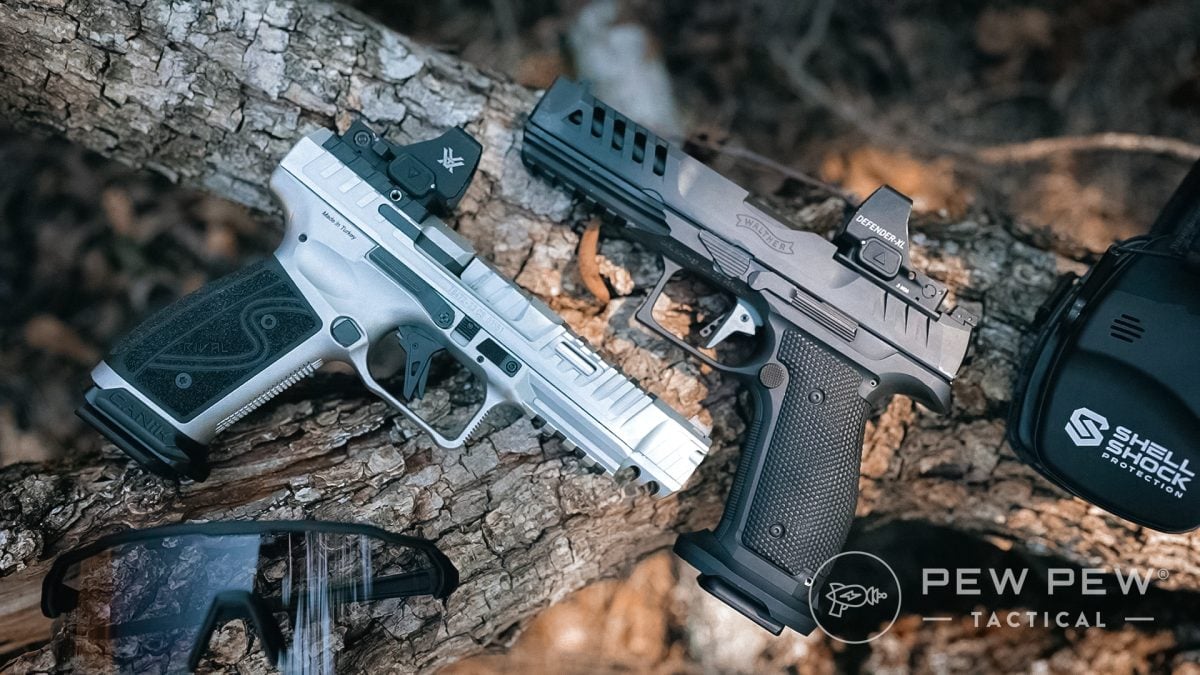
The PDP won the ergonomics category, but accuracy, reliability, and trigger were a draw. The Rival took performance and value, which answers our question plainly.
Even though the Rival is nearly $1,000 less, it is very competitive with the PDP. It would make a great starter gun for anyone considering competitive shooting.
Do you think the Canik is the best bang for the buck, or does the Walther PDP Match take the cake? Let us know which you would buy in the comments below. Interested in other steel-frame pistols? We have a full list of recommendations in the Best Metal Framed Semi-Auto Pistols.









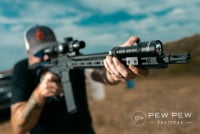





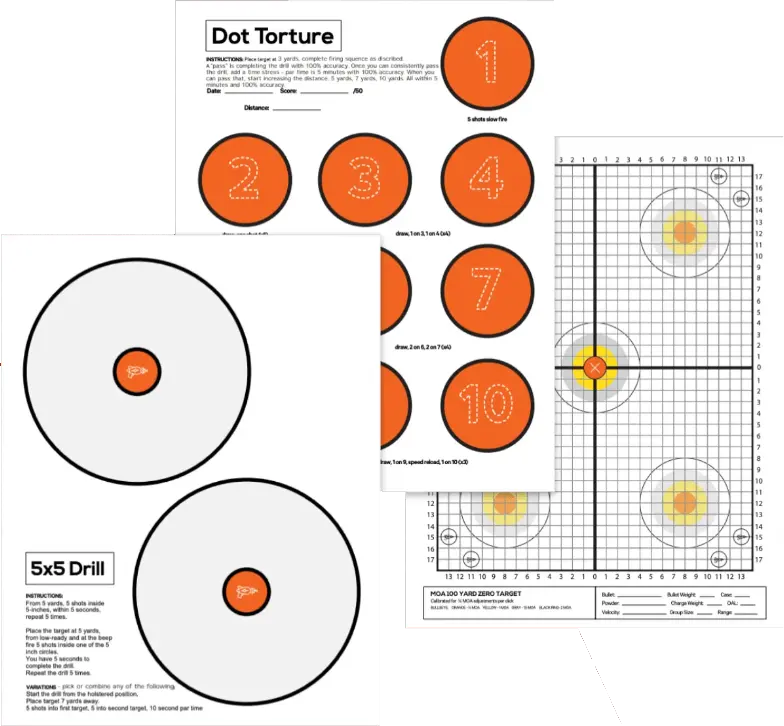
17 Leave a Reply
I’ve owned a Canik Rival (Polymer) for a while now. It’s my favorite shooter! I’ve had other nice guns, but nothing terrible expensive. I owned a Beretta 92fs for a dozen years and loved it, but had to give it up because it hurt my arthritic hands to shoot it. Don’t know why, but I can shoot the Canik just fine, and I shoot it very well! Wonder what difference the steel model would make?
Great article! When it comes to competitive shooting both will work, as you proved very well. However, for duty carry (uniform or plain clothes) our Metro Firearms Tactical Training Unit gave a thumbs up for the Walther and a thumbs down for Canik.
On a lighter note, having test fired both makes, in several models, I'm all in on the Springfield XDM Elite in 45 Auto!
Thank you Steven, and thanks for your service. I'm familiar with populating approved duty carry lists and even carried a PDP just before I retired. Was the Canik tested or did it not make the list for some other reason?
Great question and article, a good baseline is if getting $1000 dollars worth of 9mm would make you a better shooter than just buying a $1800 gun.
Thanks, Sam. That's the summary we came up with, too, but it does run a little bit deeper. There is evidence to support the PDP as the better long-run investment due to durability. That is one factor we didn't test in order to keep the video short enough that people would still watch.
“I’ll just have to be careful…in stressful situations.”
If you continue to carry that gun for defensive purposes, you’re a danger to anyone around you. You’re not an operator and you won’t “be careful” in a stressful situation. Please put your pride aside and get a decent carry gun.
Hey Tom, I see now that you were responding to Ken.
I find it funny that most reviewers come to a similar conclusion after comparing a Canik to its more expensive rivals. That conclusion is the Canik is just as good and reliable as the more
Expensive offerings. But then they go on to say the Canik is a good “beginners” gun. It sounds to me like the Canik is simply a good gun and that there isn’t really any improvement to be had by spending an extra grand.
That's a great point Keith. The only thing I'd add to the value proposition is a comment from the video. One user has both guns and found themselves replacing springs in the Canik more frequently so switched to the more long-term durable (in their opinion) Walther. The Canik is a great gun, but if you're looking for long-term value (something we didn't test) Walther may be better.
I purchased the Canik Rival S Darkside in January 2025. I had trouble with it right away. I used 124 gr, which seemed to help. It is a fun pistol to shoot but the quality was terrible. I changed some of the springs that seemed to help but it then would not return to battery and other issues. I took it to the gunsmith and they are trying to diagnose the problem. Five months later, I still do not have it back. I was told by the gunsmith that the Caniks are either amazing or terrible. Do research on internet before buying.
Not sure why you didn’t contact Canik. After 6,000 rounds I had some trouble. Canik send me a FedEx slip and they took care of the issues and fedexed it back to me. All at no cost. Their warranty and warranty service is excellent.
I'm glad to hear that. We can't comment on customer service because our experience may be vastly different than the average shooter's based on who we are and what we do. I'm encouraged that your experience was a good one.
Thanks for chiming in Renee. We've seen the same. The Mete MC9 we tested did not fare so well.
I own a CanikmMrte SFT with the shorter barrel. I swapped the original. Barrel for the longer threaded barrel and am trying out a few compensators to see which is the best. The idea was to have a carry gun that I could try a little competition with. The Mete with the longer barrel isn’t really concealable during the summer months so if I do carry it it will be open. The only real problem with it is that it doesn’t like CCI blazer ammo and won’t feed with either barrel, but Magtech works perfectly. I think it’s one of the best shooting gun I’ve ever fired. I tried the Walter and it didn’t fit my hand. The Canik has had the addition of an upgraded trigger and two stage recoil spring from Springco. I love that trigger! No take up and quick reset. I’ll just have to be careful no to have my finger iron the trigger in stressful situations, but like with anything else it comes down to practicing regularly.
Ken, if you've got one you can train with and get accustomed to, great. There are few things more stressful than gunplay, so keep that in mind.
I would buy the Canik simply because it is more economical as well as maintaining the same accuracy. Personally, I find the real difference between guns is the individual pulling the trigger.
There is much to support your position Dan, thanks for sharing. I think you're absolutely right, but recognize too, that that Walther's value may be more of a long-term investment.